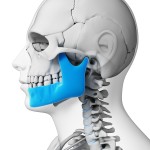
Fracture of the mandible often occurs through the angle where it may be closely related to, or involve an impacted third molar. There is a debate about whether they should always be extracted or retained. The aim of this review was to measure the occurrence of postoperative infection following mandibular fixation performed in the presence of teeth in the line of mandibular angle fracture – either tooth removal or maintenance of the tooth.
The Medline, Virtual Health Library (VHL), Cochrane Library, and Scopus databases were searched. Only English language studies were included. An assessment of study quality was undertaken.
- 13 studies were included (3 prospective, 10 retrospective)
- Only 1 study was considered at low risk of bias, 3 at moderate risk and the remainder at high risk.
- The 13 studies included 1542 mandibular angle fractures with the presence of teeth in the fracture line .
- In 788 cases with tooth removal, there were 84 cases of postoperative infection (10.7%).
- In 754 cases with tooth retained, there were 84 cases of postoperative infection (11.1%).
The authors concluded
it was observed that there was no significant statistical difference between removing or retaining the tooth in the line of fracture and the occurrence of postoperative infection.
Comment
Only 3 of the 13 included studies were prospective so most of the information in this review comes from retrospective studies,which have a much greater tendency for selection bias. Retrospective studies also rely on the quality of the medical records so may not always have recorded the relevant information.
Links
Bobrowski AN, Sonego CL, Chagas OL Junior. Postoperative infection associated with mandibular angle fracture treatment in the presence of teeth on the fracture line: a systematic review and meta-analysis. Int J Oral Maxillofac Surg. 2013 Apr 25. doi:pii: S0901-5027(13)00152-5. 10.1016/j.ijom.2013.02.021. [Epub ahead of print] PubMed PMID: 23623782.
